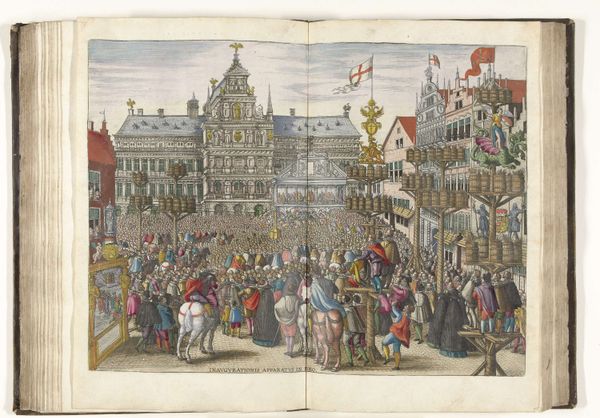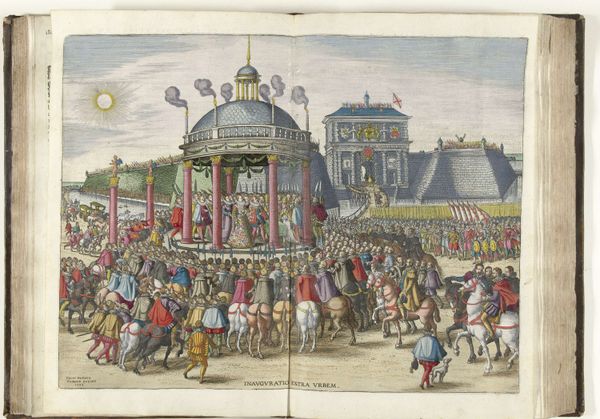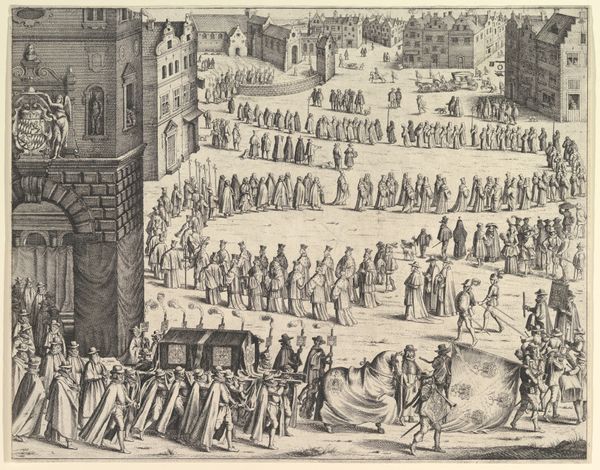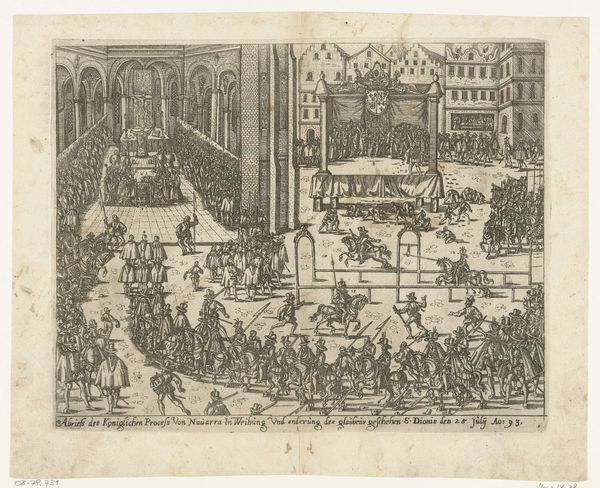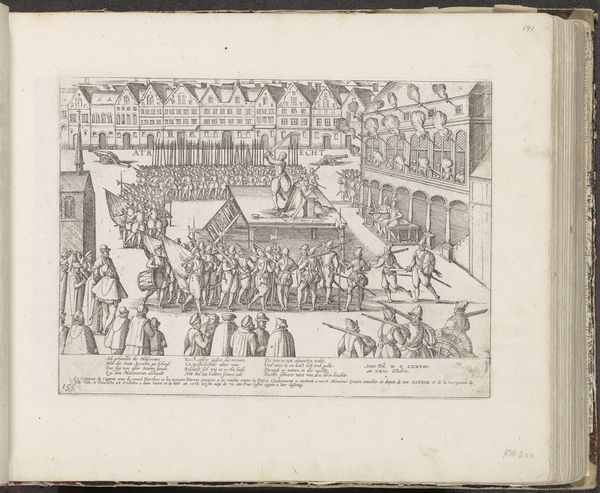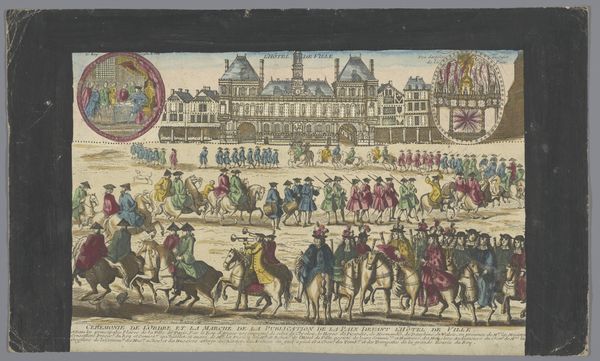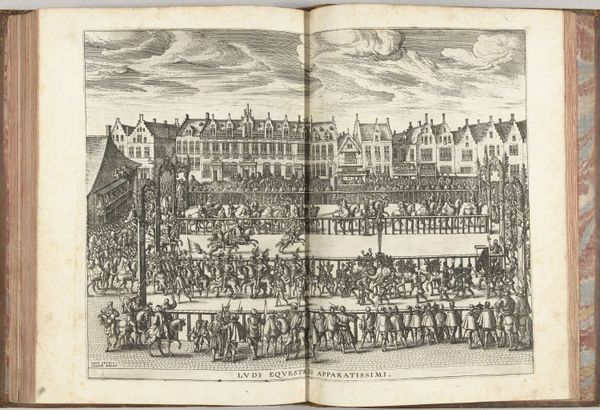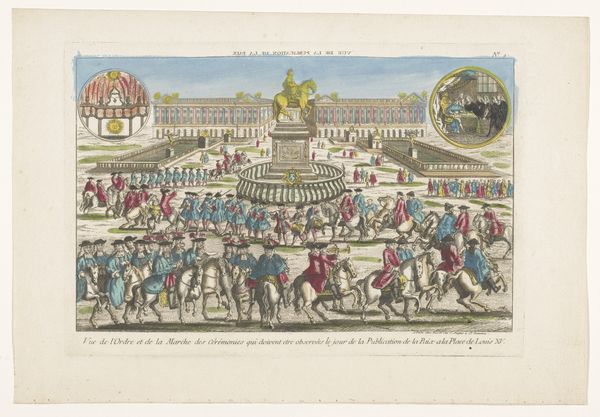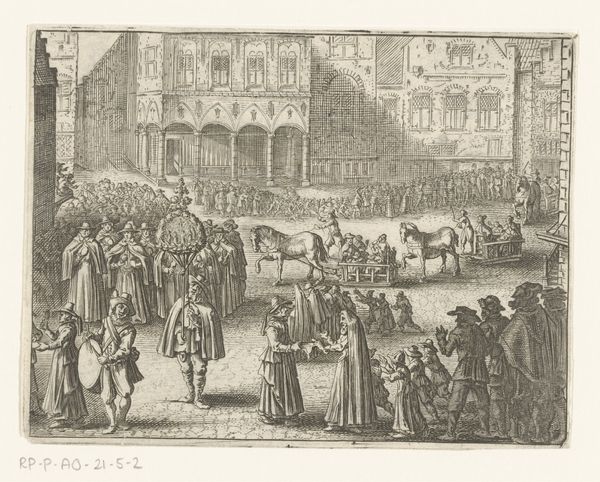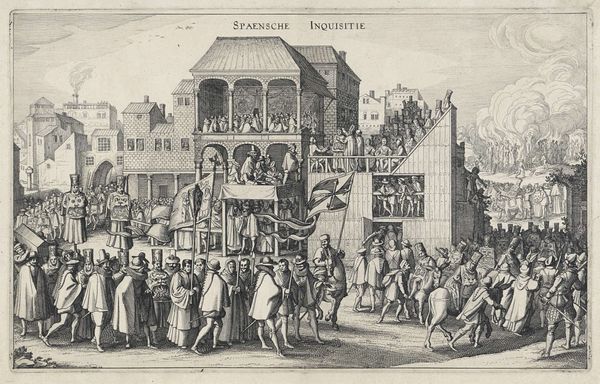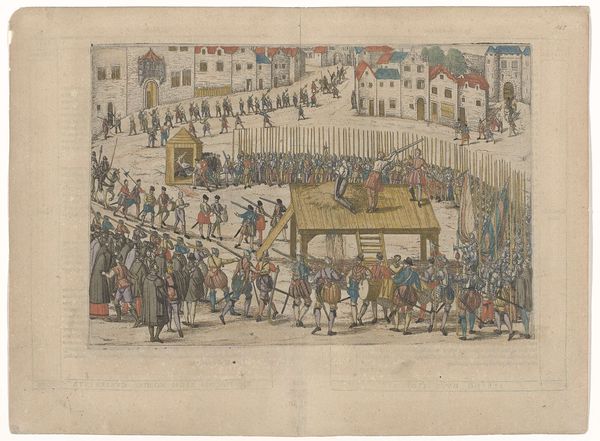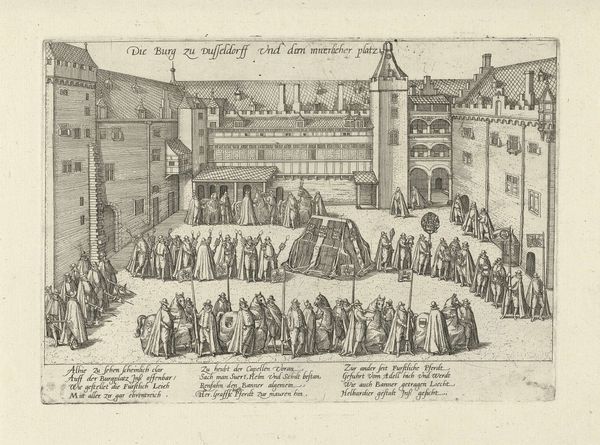
print, engraving
# print
#
11_renaissance
#
coloured pencil
#
cityscape
#
genre-painting
#
history-painting
#
northern-renaissance
#
engraving
Dimensions: height 326 mm, width 436 mm
Copyright: Rijks Museum: Open Domain
Editor: This is Pieter van der Borcht the Elder's "Welkomst in de stad," or "Welcome to the City," made in 1599. It's a print, an engraving. What I immediately notice is its meticulously crafted composition. The artist uses sharp lines and the contrasting colors to create movement in the entire print. How would you interpret this, considering its formal elements? Curator: Formally, observe how the artist's structured use of space segments the crowd to construct visual harmony. Note also how lines create texture, leading to contrasts and depth. Can you describe the shapes used and how do these affect the narrative? Editor: The use of circular shapes - shields and sun - softens some hard angles. It makes me think about unity and harmony. What else catches your eye when you look at the print purely as a work of art and technique? Curator: Note how light is being presented via color choices. See the concentrated and vivid rendering of figures with defined contour lines in contrast to backgrounds, thus creating dynamic depth on a flat surface. Are there other structural characteristics? Editor: Yes, definitely the symmetry! The central platform seems like the focal point. Thank you, I hadn’t considered it just from its formal arrangement; it’s not just the event being portrayed but its meticulous structure too. Curator: Precisely. Visual language can unveil various narrative. What's significant here isn't just what's represented, but *how* it's represented through formal means. Editor: I’m beginning to appreciate art using this analytical method of viewing it, thanks! Curator: Indeed. Viewing the technical and design decisions that form art enhances not just our understanding, but also deepens our interaction with artworks.
Comments
No comments
Be the first to comment and join the conversation on the ultimate creative platform.
